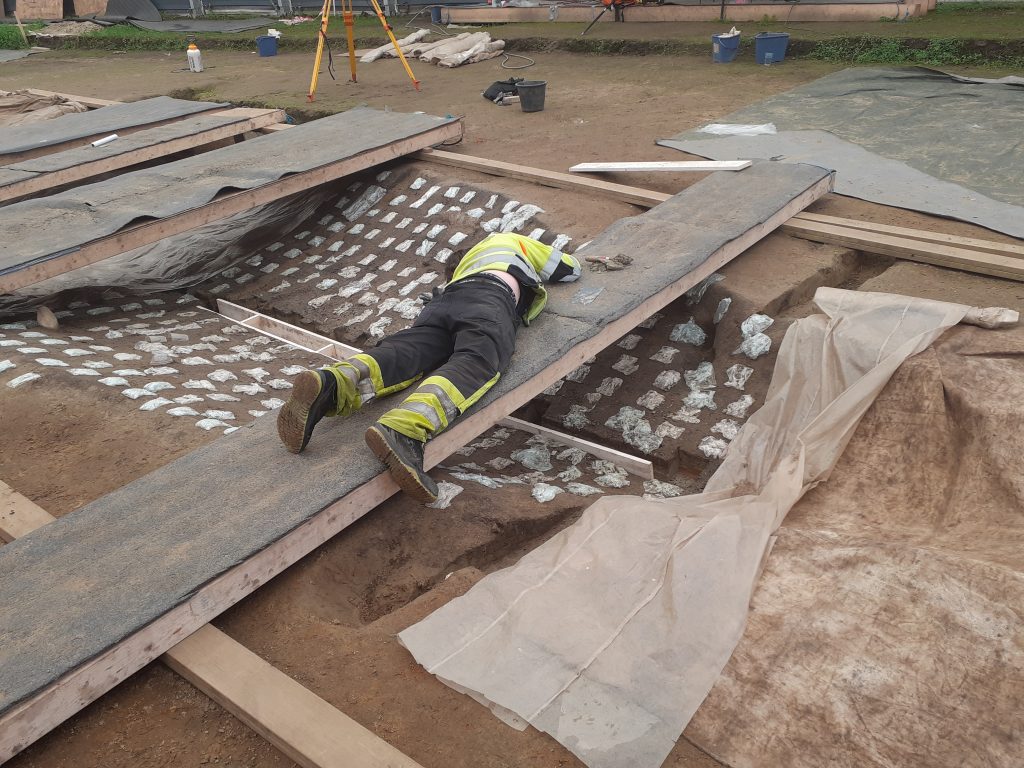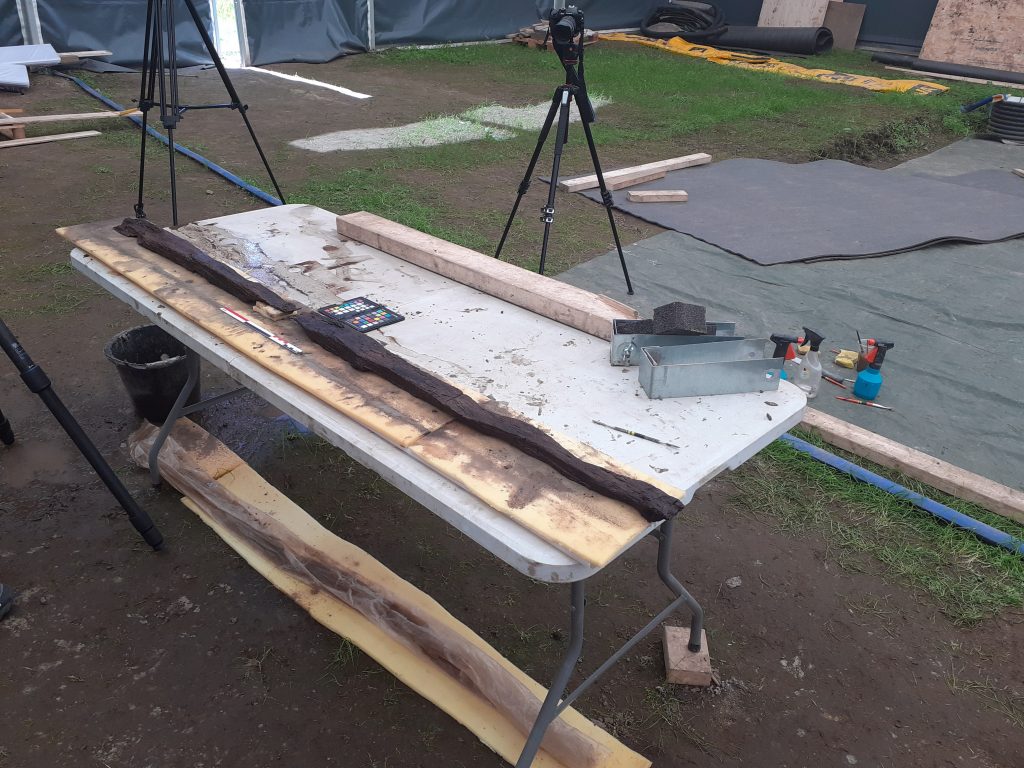Still ongoing in Oslo is the “Vikingr” exhibition at the Museum of Cultural History. On display is the most extensive collection of Viking swank assembled in Norway, including the world’s only intact Viking helmet (sans horns, if there was still any doubt).
Of particular interest to us is silver hoard from the 10th Century, found on the Teisen farm in Oslo in 1844. Among the items here are several Arabian and Persian coins from present day Iran and Iraq. There are also armrings, probably made from melted-down silver coins, which could both be worn and used as currency, sort of like a portable mini-bank. Finally, there are cut-down pieces of silver which must also have been used to buy stuff with and weighed according to price.
As if this wasn’t enough proof that 10th Century Norway was interconnected with large parts of the world, the next display case shows a treasure unearthed at a farm in Buskerud in 1834. While the Vikings mainly used silver, usually originating in the Caliphate, as currency, this hoard contains gold rings including one from England, multi-coloured pearls, Roman jewellery repurposed in the Viking Age, Frankish ornaments, as well as the omnipresent Arabian coins.
At the exhibit there are also finds from a female grave, which includes weapons. This could indicate that the roughly 19-year-old girl was a warrior, but little is known for sure. The still-intact skull will soon be DNA analysed, which may yield further information.
The museum is connected to the Viking Ship House on Bygdö Island, a short ferry trip away. A ticket for one is a ticket for both and can be used on different days. However, the Viking Ship Museum will soon be closed for renovation and will only reopen, vastly expanded, in 2025. Vikingr will run for a few more years. Even if you are not passing through Oslo Norway, you can take a virtual tour here:
https://my.matterport.com/show/?m=KLqd8Ur9Uuf
There is also an introductory video with English subtitles here:
https://www.khm.uio.no/english/visit-us/historical-museum/exhibitions/vikingr/index.html



